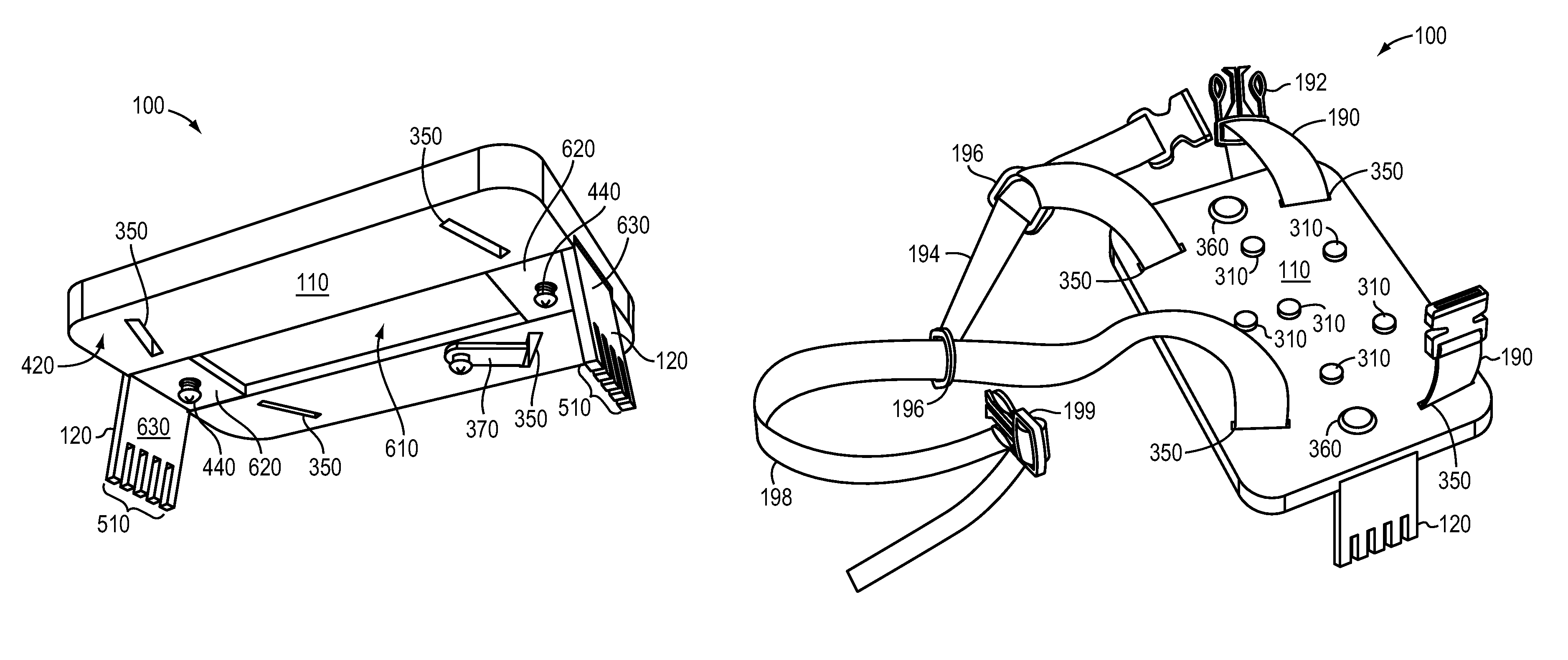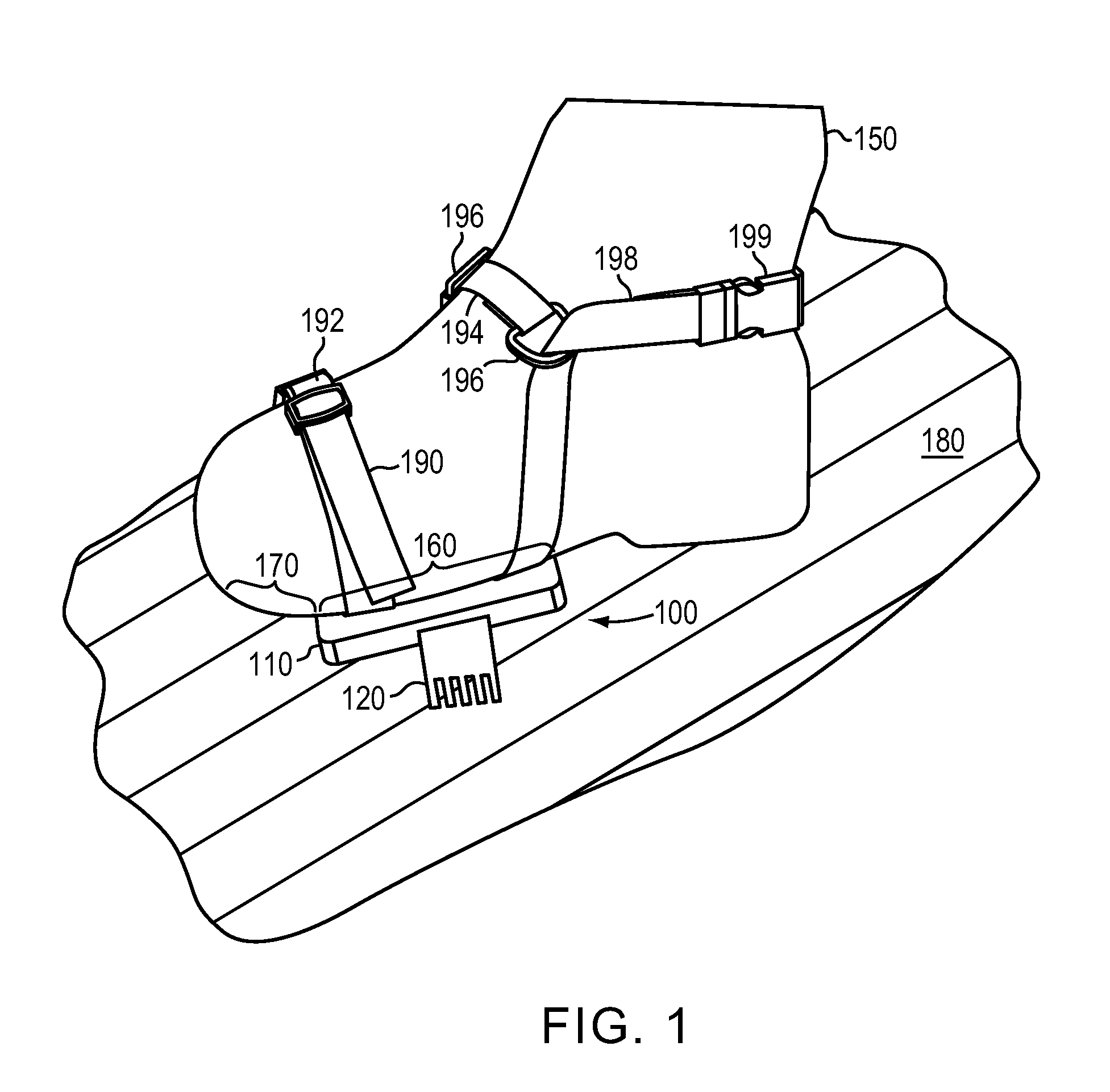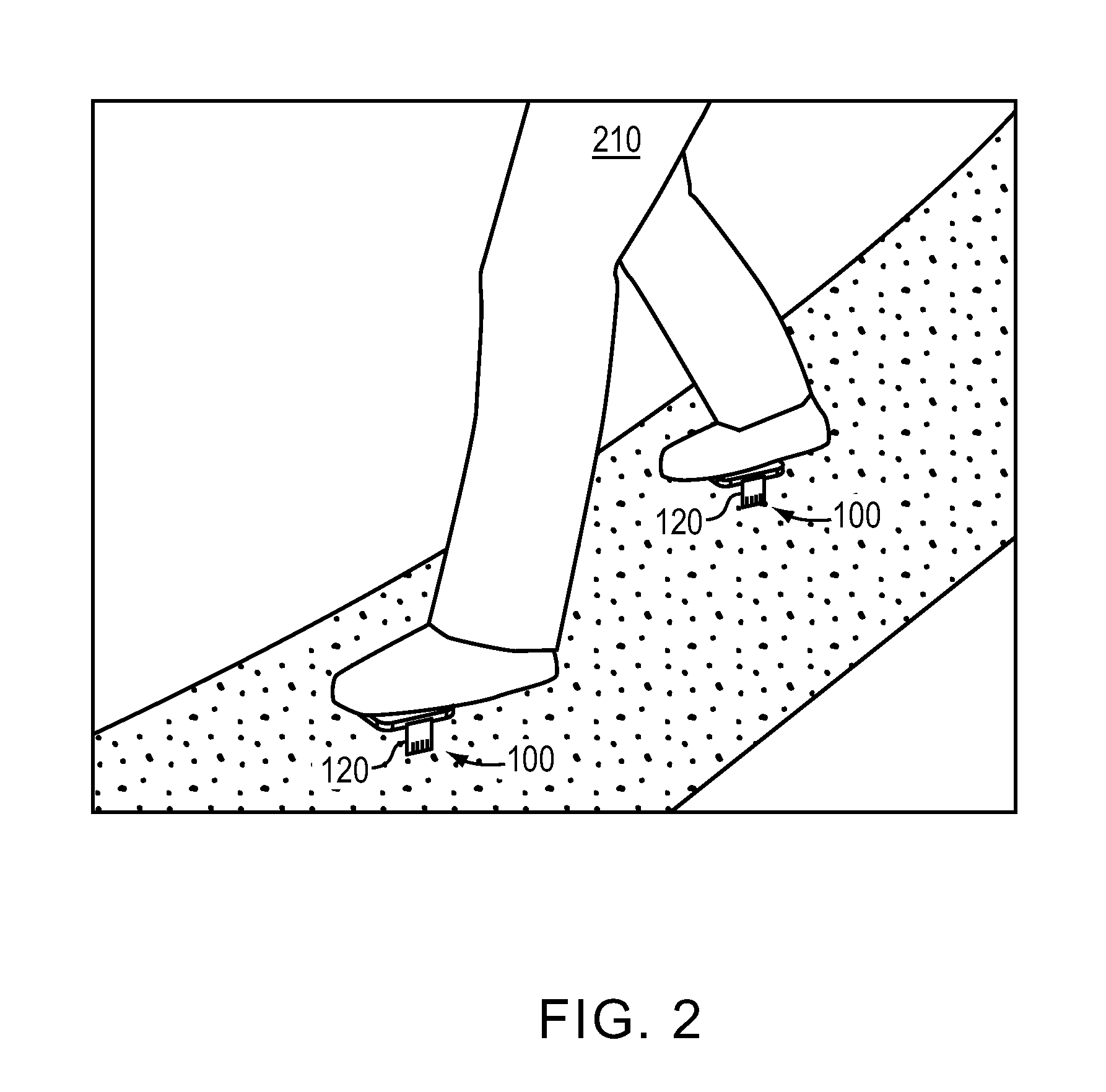Hiking boot attachment for descending slopes
a technology for hiking boots and descending slopes, applied in the field of hiking boots, can solve the problems of increasing the pressure on the knee cap and cartilage of the knee joint, affecting and affecting the comfort of the hiker, so as to reduce the strain on the hiker's knee, increase the lateral stability, and not impede the healing of the knee to the effect of toe-to-toe rocking
- Summary
- Abstract
- Description
- Claims
- Application Information
AI Technical Summary
Benefits of technology
Problems solved by technology
Method used
Image
Examples
Embodiment Construction
[0023]Referring to FIG. 1, an example hiking boot attachment 100 may be secured to a hiking boot 150. The hiking boot attachment 100 includes three primary components: a platform 110, first and second detachable supports 120 (of which only the first detachable support visible in FIG. 1), and a strap system that includes straps 190, 194, 198, When secured to a hiking boot 150, the attachment 100 operates to raise a mid-portion 160 of the sole of the hiking boot 150 (centered under the ball of the hiker's foot) off the ground 180, to decrease the incline of the boot when descending sloped ground. For example, the hiking boot 150, and thus the foot of the hiker, may remain substantially horizontal, despite the slope of the ground 180, such that the hiker may experience the descent as similar to walking down stairs. Decreasing the incline of the hiking boot 150, and thus the incline of the foot of the hiker, generally reduces strain upon the hiker's knee, as there is less need for the k...
PUM
 Login to View More
Login to View More Abstract
Description
Claims
Application Information
 Login to View More
Login to View More - R&D
- Intellectual Property
- Life Sciences
- Materials
- Tech Scout
- Unparalleled Data Quality
- Higher Quality Content
- 60% Fewer Hallucinations
Browse by: Latest US Patents, China's latest patents, Technical Efficacy Thesaurus, Application Domain, Technology Topic, Popular Technical Reports.
© 2025 PatSnap. All rights reserved.Legal|Privacy policy|Modern Slavery Act Transparency Statement|Sitemap|About US| Contact US: help@patsnap.com



